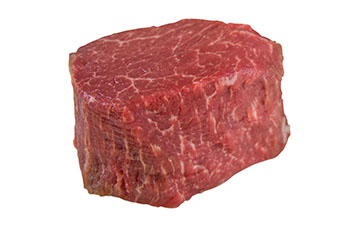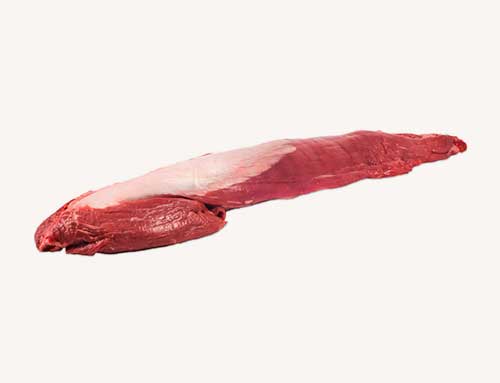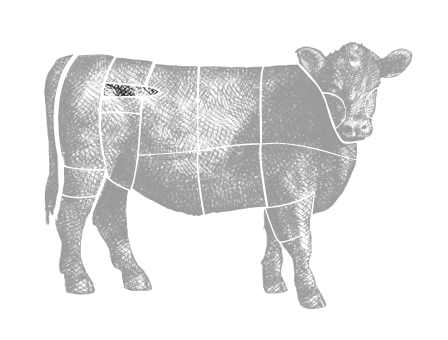
Guide to Beef Cuts




Small, thin, lean, incredibly tender muscles located on either side of the backbone, tenderloins are the most prized cut on the entire animal. Their buttery tenderness is legendary and people are willing to pay very high prices for tenderloin roasts & filet mignon steaks.
This cut has a relatively mild flavor (though grass-fed tenderloins are more flavorful than grain-fed ones), so tenderloin roasts & steaks are frequently paired with sauces that add moisture & additional flavor. One of the fancier classical roast recipes, Beef Wellington, is traditionally made with beef tenderloin. This is also an excellent cut for making steak tartare and carpaccio.
Tenderloins have a narrow end and a thick end. To ensure consistency, roasts & steaks are typically cut from the thick end. Roasts can be made from the thin end by cutting the smallest portion off and trussing it to a thicker portion using butcher’s twine. The thin end can also be sliced for beef medallions.
These tenderloins are sold with the “chain” on. The chain is a muscle that runs along the tenderloin. Because it isn’t very pretty or a very useful thickness, it’s usually cut off the tenderloin by butchers or chefs and sautéed as a snack.
Tenderloins also have a side muscle that juts off the thick end. It’s typically cut off of the tenderloin and can be used as a small tenderloin roast. These tenderloins are sold with the side muscle still attached and are cleaned of surface fat down to the silver skin. This version of the cut is sometimes referred to as a “PSMO Tenderloin” (PSMO stands for “Peeled, Side Muscle On”).
Beef tenderloins are often graded into sizes by weight, with “5 & Up” referring to ones graded at or above 5 pounds each.



